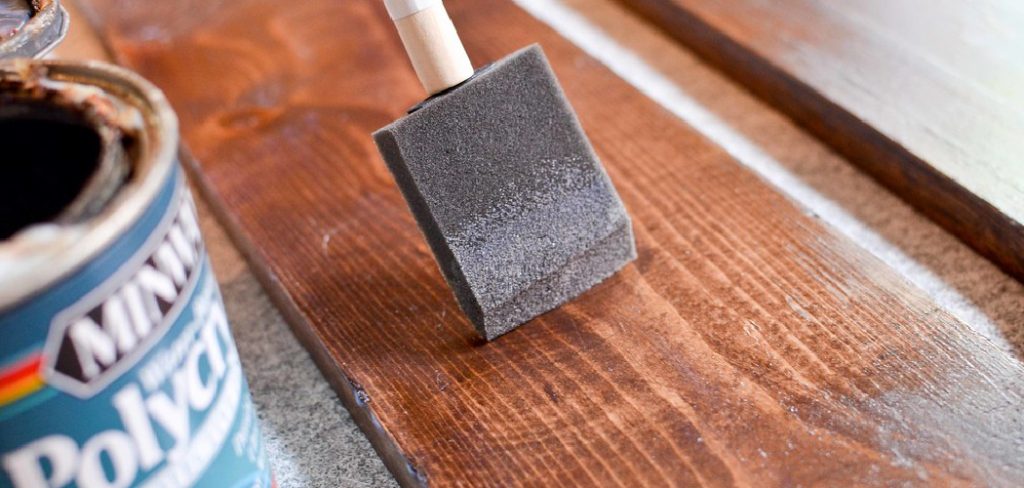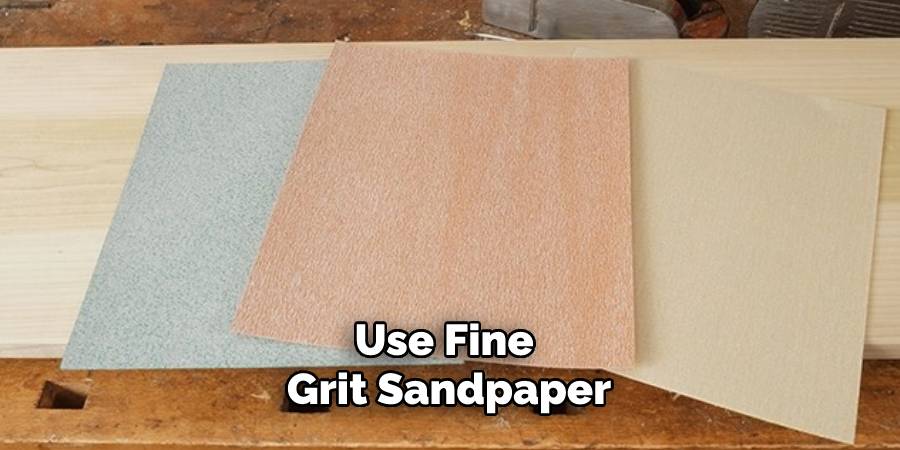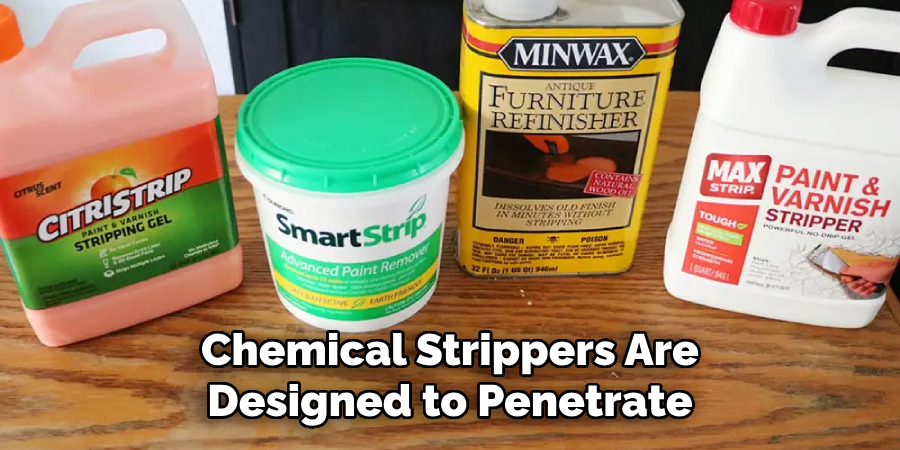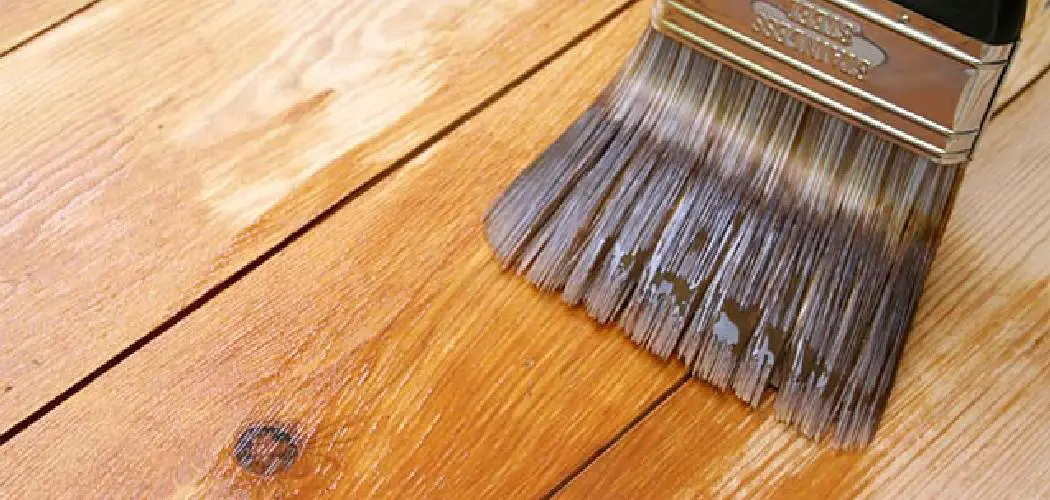Whether you have an antique piece of furniture that has been covered in multiple layers of lacquer or a modern piece with a single layer, there are several reasons why you must learn to strip lacquer from wood. The first reason is that the lacquer can become damaged over time due to exposure to sunlight and other environmental factors.

The advantage of stripping lacquer from wood is that it will give the wood a new look and make it easier to stain or paint. It also helps remove dirt, grease, wax, and grime that has built up over time. If you’re looking for an easy way to restore wooden furniture, stripping lacquer can be a great choice. In this blog post, You will learn how to strip lacquer from wood in detail.
How Do You Prepare the Wood for Stripping?
Before stripping lacquer from wood, you need to prepare the surface properly. Start by sanding the surface with light-grit sandpaper to remove dirt and debris. After that, use medium-grit paper until you have a smooth finish. Make sure to sand in the direction of the grain for the best results. Once the surface is prepped, you are ready to start stripping lacquer from the wood.
If the surface of your project has been previously painted or stained, you will need to strip off that layer before stripping the lacquer. To do this, use a chemical stripper and follow the manufacturer’s directions. Make sure to wear protective clothing and eye protection when working with the chemical stripper. Once you have stripped off the previous coat, it is time to move on to stripping lacquer from the wood.
Tools You Will Need
- Safety Goggles
- Respirator
- Chemical Stripper
- Paint Brush or Chip Brush
- Putty Knife or Scraper
- Steel Wool or Abrasive Pad
- Vacuum Cleaner with Attachments
- Mineral Spirits
- High-Quality Lacquer Sandpaper
- Soft Cloth
Step-by-step Instructions for How to Strip Lacquer From Wood
Step 1: Inspect the Items
Made of Wood. Before attempting to strip lacquer from wood, inspect the items to ensure that they are made of wood and can be safely stripped.

Step 2: Remove Any Hardware or Fixtures From the Surface
It is important to remove any hardware or fixtures before beginning the process of stripping lacquer from wood. This includes screws, nails, hinges, handles, and any other attached components. Make sure to prepare the work area properly before beginning. Cover all furniture and floors with a drop cloth or plastic sheeting to protect them from damage caused by stripping lacquer from wood.
Step 3: Put on Protective Gear
Put on protective gear such as safety glasses, gloves, and a face mask before beginning the stripping process. Apply the appropriate type of stripper to the lacquered surface using a paintbrush or cloth. Make sure to apply an even coat over the entire surface that needs to be stripped.
Allow the stripper to work for the suggested amount of time as indicated on the label. This is usually between 10-15 minutes and may vary depending on the type of lacquer being removed.
Step 4: Scrape Away The Lacquer Using a Putty Knife
Once the recommended amount of time has passed, use a putty knife to scrape away the loosened lacquer. Ensure not to apply too much pressure as this could cause damage to the wood underneath. Instead, scrap gently and evenly in one direction until all of the lacquer has been removed.
Step 5: Wipe Down The Surface With A Damp Cloth
Once you have scraped away the lacquer, use a damp cloth or paper towel to wipe down the surface and remove any residue. You may need to do this several times until all of the lacquer has been completely removed. It is important to discard any used cloths or pieces of paper towel when you are finished in order to prevent the spread of lacquer and other chemicals.
Step 6: Sand The Surface with Fine Grit Sandpaper
When you are happy with the condition of the wood, use fine grit sandpaper to give the surface a smooth finish. This will help to ensure that any imperfections are evened out, and the surface is prepared for refinishing.
Once all of the previous steps have been completed, you can begin the process of refinishing the wood in the color or finish of your choice. This will help to restore the original appearance and seal the surface against damage caused by water and other elements.

Following these steps will ensure that you know how to strip lacquer from wood and achieve professional results safely. With a little patience and attention to detail, you can easily remove any unwanted lacquer and restore the original beauty of your wood.
Precautions for How to Strip Lacquer From Wood
- Wear protective clothing and a respirator when sanding or working with chemical strippers.
- When using a chemical stripper, work in a well-ventilated area to reduce the risk of inhaling harmful fumes.
- Store all stripping products in their original containers and out of reach of children.
- Wear chemical-resistant gloves when working with chemical strippers, and always wash your hands after handling them.
- Dispose of stripping products, including rags soaked with a stripper, in accordance with local, state, and federal regulations.
- Do not smoke or bring any kind of open flame near the area where you are performing the stripping.
- Set up a fan to blow away fumes and dust, if needed.
- Protect the area around your work with drop cloths to catch any drips or spills of the stripper.
By following these precautions when learning to strip lacquer from wood, you can ensure that the job is done safely and without any accidents.
Is It Necessary to Use a Chemical Stripper, or Can Sandpaper Be Used Instead?
The answer to this question depends on the type of lacquer and how much of it there is. If the lacquer is relatively thin, then sandpaper can be used instead. However, if the lacquer is thick or has gone through several layers of buildup, then a chemical stripper may be necessary to get all of the layers off.
Chemical strippers are designed to penetrate and break up the lacquer, making removing it from the wood surface easier. They work best when applied and left on for several minutes before scraping or wiping away with a cloth.

The amount of time and number of applications needed will depend on how thick the layers of lacquer are. Sandpaper, on the other hand, can be used to sand away the lacquer. This will take longer than using a chemical stripper and may require multiple rounds of sanding to remove all of the layers.
What is the Best Way to Remove Stubborn Lacquer From Wood?
Stripping lacquer from wood can be difficult and time-consuming, but removing any old or damaged coatings is important before refinishing furniture or other wood items. The best way to strip stubborn lacquer from wood is with a chemical stripper specifically designed for the job. Chemical strippers are available in both liquid and paste forms, and both are effective at removing lacquer.
When using chemical strippers, it is important to use only those designed for use on wood surfaces specifically. Acid-based strippers should not be used on wood because they can cause damage or discoloration. It’s also important to wear protective clothing, safety glasses, and rubber gloves when using chemical strippers.
To apply a liquid or paste stripper, use a clean damp cloth to spread it over the wood in an even layer. Let the stripper sit for about 20 minutes, then scrap the lacquer away with a plastic scraper.
Are There Any Environmental Concerns That Need to Be Considered When Stripping Lacquer From Wood?
When stripping lacquer from wood, environmental concerns such as air quality, hazardous waste disposal, and water contamination must be considered. Airborne particles, vapors, and fumes can be created during the process of stripping lacquer which can affect the air quality in your home or workspace.
To mitigate this risk, it is important to work in a well-ventilated area and to use chemical strippers or other solutions formulated with lower Volatile Organic Compounds (VOCs). Proper ventilation is also key; this can be achieved by opening windows and doors or using an exhaust fan.
When disposing of hazardous materials such as paint strippers, it is important to follow local laws and regulations. Most hazardous waste must be disposed of at a special facility or taken to a special collection site in your area. Additionally, it is important to keep any hazardous materials away from the waterways.

Following the proper safety precautions and being mindful of environmental concerns ensures that stripping lacquer from wood is done safely and responsibly.
Conclusion
In conclusion, stripping lacquer from wood can be a tricky process, but one that is doable with the right tools and techniques. Start by sanding down the surface of the wood, then use chemical strippers to dissolve thick layers of lacquer. If doing this by hand, use steel wool or a brass brush to work away at the remaining residue, being sure to wear protective gear and work in a well-ventilated area.
I hope this article has been beneficial for learning how to strip lacquer from wood. Make Sure the precautionary measures are followed chronologically.

